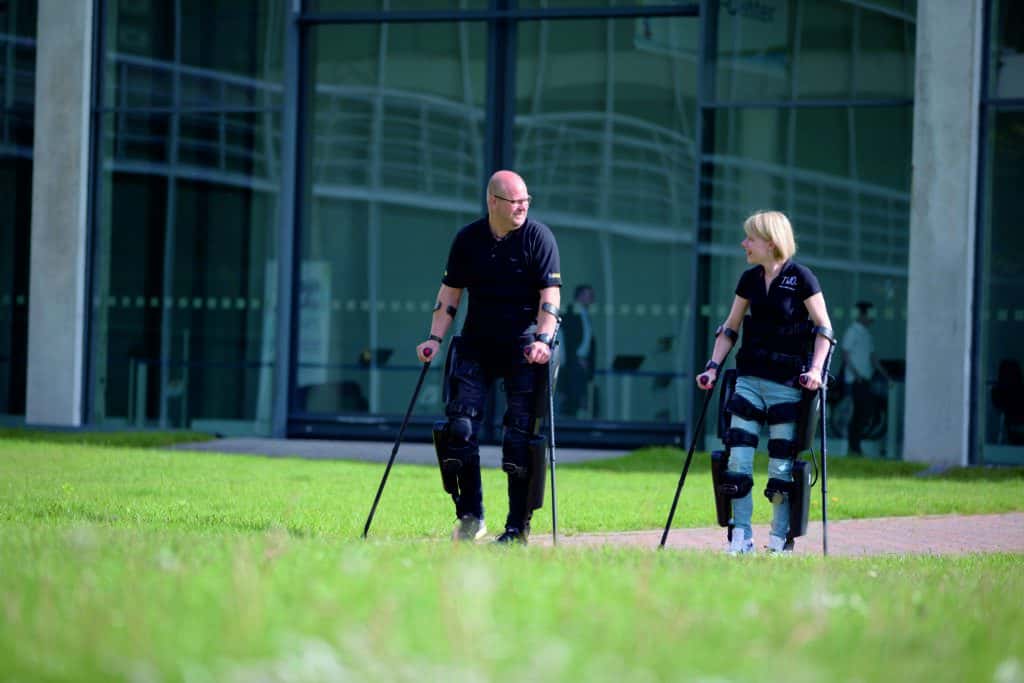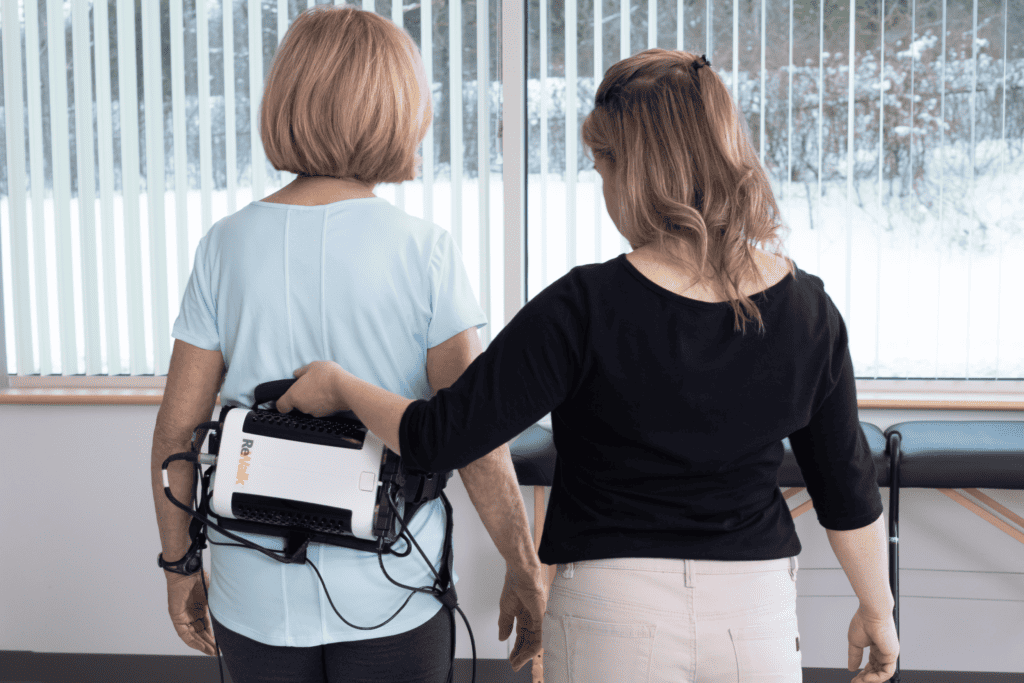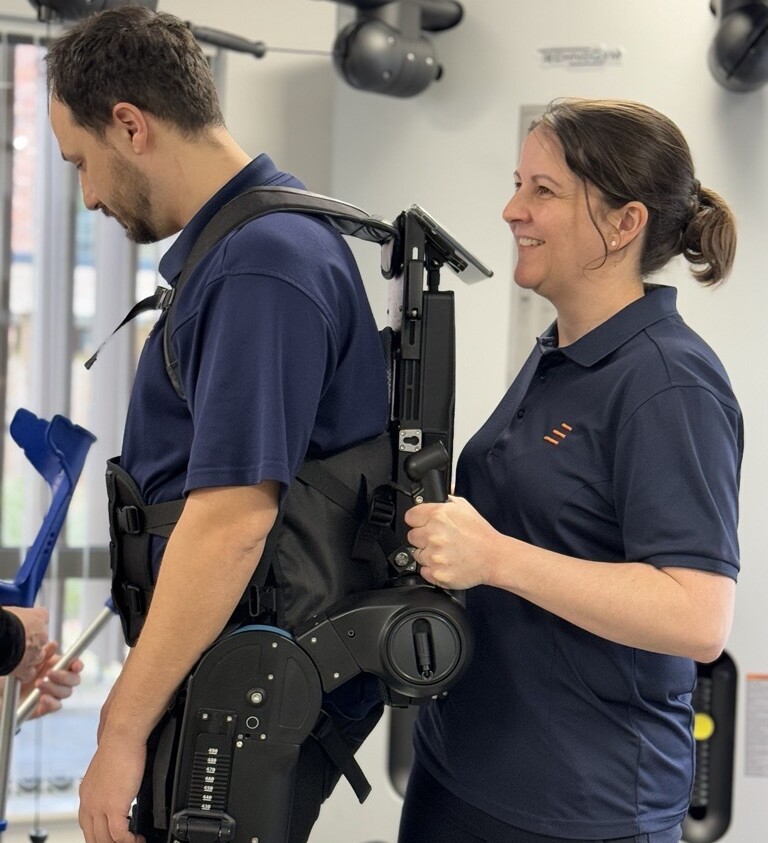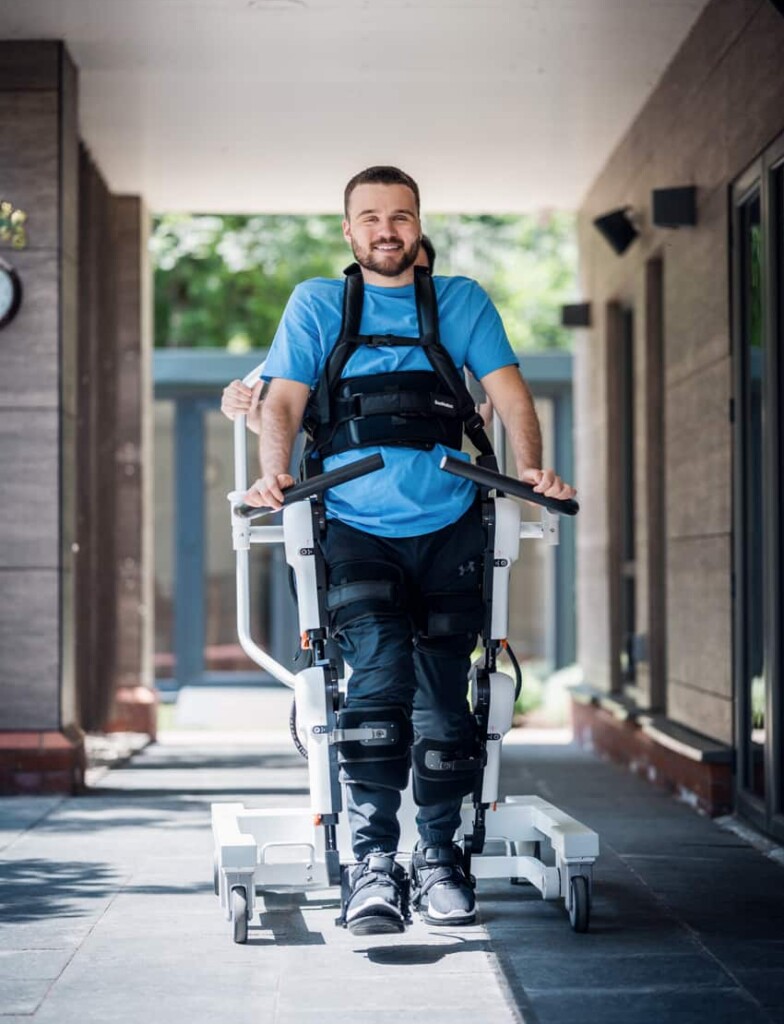STEPS is an assessment centre for a range of exoskeletons, including the ReWalk™ ReStore and ExoAtlet. Exoskeletons are designed to be used by those with spinal cord injuries at home, in the community or as part of a rehabilitation programme. We have many clients at STEPS who use this technology whilst they are with us. A combination of exoskeleton training with other rehabilitation methods improves health and wellbeing.
Robotic exoskeleton suits are designed to help people to walk after a neurological injury, supporting both functional mobility and active-based therapy. There are many physiological and psychological benefits from the use of exoskeletons.
They are particularly effective in supporting improvements to bowel function and management. Plus, regular use can help limit secondary conditions following spinal cord injury (SCI), including pain, spasticity and decreased bone mineral density. The psychological benefits of exoskeletons can’t be underestimated. Because they facilitate standing and moving at eye level, they can be hugely empowering for someone who normally uses a wheelchair, leading to improved social interactions and increased confidence.
Exoskeletons work by assisting in the development of new neurological pathways both in the brain and spinal cord. With each step, a client produces signals that travel to their brains. By continuing this cycle of signals, a pattern is established akin to natural gait and the exoskeleton provides a powerful stimuli for restoration of sensitivity and independent walking.
STEPS works in partnership with Stephen Ruffle at Thor Assistive Technologies, to give clients access to this incredible technology for use as part of their rehabilitation. For ReWalk™, ReStore and ExoAtlet assessments – please contact us for more information.

ReWalk™
ReWalk™ is a wearable robotic exoskeleton that provides powered hip and knee motion to enable individuals with SCI to stand upright, walk, turn and climb and descend stairs.

ReStore™
ReStore™ is a powered, lightweight soft exo-suit intended for use in the rehabilitation of individuals with lower limb disability due to stroke. It is the only post-stroke gait training solution that provides both dorsiflexion and plantarflexion assistance to facilitate functional gait training.

ExoAtlet
The ExoAtlet is used as a gait training and rehabilitation device to improve walking function and independence with a neurological or muscular injury, illness, or weakness. Clients can control the suit via a smart crutch, or by our medical team via a tablet. One battery charge is enough for a full day’s training.

ExoMotus™ M4
Developed by Fourier Intelligence, the ExoMotus™ M4 device allows individuals with lower limb impairments to increase their activity level by performing routine ambulatory functions such as standing and walking on level surfaces and mild slopes. The device allows for individualised gait parameters to suit the user's specific needs. Early-stage rehabilitation training, such as sit-to-stand exercises, can be performed using the device to promote ideal sensory input, enhance cardiopulmonary function, and prevent muscle atrophy.

WINBACK G-Move Suit
The G-Move Suit is a revolution in the field of active compression treatment, that activates both the venous (stimulates blood exchange) and lymphatic (reflux stimulation) systems during movement.
Developed by WINBACK UK & Ireland, experts in Pain Management solutions, this wearable tech activates both the venous and lymphatic systems, promoting blood flow and reducing muscle soreness.
Using 'Pressotherapy,' the G-Move Suit applies compression to the lower limbs, enhancing circulation and reducing muscle soreness during and after sessions. The pressure applied by the G-Move stimulates both mechanoreceptors and baroreceptors in the legs, providing the user with greater sensory and proprioceptive feedback.
STEPS is using this innovative technology to support intensive neurorehabilitation for clients recovering from incomplete spinal cord injuries, brain injuries and stroke.
Clients using the WINBACK have shown improved muscle activation, resulting in improved joint alignment which has led to an increase in confidence when practicing walking and also an improved walking pattern.